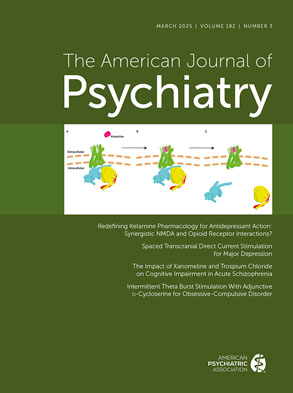To the Editor: Currently, nearly one in every 13 adults abuses alcohol or is alcohol dependent. In addition, several million adults also engage in risky drinking behavior that could lead to alcohol-related problems. However, only a small proportion of the people with alcohol problems ever seek and engage in treatment
(1). A national survey in the United States
(2) found that only 16% of those with alcohol use disorder had received treatment in 2001. In the Netherlands
(3), only 10% of the problem drinkers ever got professional help. Women, higher-educated people, employees, and elderly people are harder to reach for face-to-face care. Several things have improved the accessibility of alcohol interventions
(4,
5).
To fill the gap in accessibility, an e-therapy program was developed in the Netherlands. The content and elements of the e-therapy program are comparable to the ones of face-to-face treatment as usual. This e-therapy program distinguishes from other Internet interventions by forming an ongoing personal relationship between the therapist and client that takes place solely via Internet communications. It involves more than self-help or answering a question online. It is a structured and complete treatment program in which clients remain anonymous. The aim of this study was to determine if e-therapy indeed reaches another population with alcohol problems.
We compared the baseline characteristics of 172 e-therapy clients with a consecutive series of 172 face-to-face clients admitted for treatment as usual. All e-therapy clients gave their informed consent to participate in the research project. For the face-to-face clients, we used anonymous data files. The results showed that the baseline characteristics of the two groups differed by gender, age, education, and work situation. Chi-square tests were used to compare proportions and t tests to compare means. The e-therapy group involved significantly more women than the face-to-face group (χ2=9.25, df=1, p=0.002). People in the e-therapy group more highly educated (χ2=46.56, df=2, p<0.001) and more often employed (χ2=69.13, df=1, p<0.001) than the people in the face-to-face group. E-therapy clients were also significantly older than face-to-face clients (t=3.24, df=342, p=0.001).
Our conclusion is that e-therapy serves a new group of people with alcohol problems. We reach more women, higher-educated people, employed people, and elderly people—the groups that are difficult to reach in regular face-to-face therapy. The Internet offers an opportunity for improving access to therapy for problem drinkers. Our next step is to compare the efficacy and effectiveness of e-therapy and face-to-face therapy.

